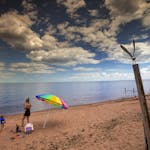Q: Will there be in-classroom instruction for children starting this fall?
A: The state's policy is to encourage learning in the classroom because, apart from the instructional benefits, it helps children with personal and social development. However, the decision is left up to each school district in consultation with health and education officials. Schools can switch to distance learning or a combination of both in-person and online learning to keep students and staff safe from COVID-19.
Q: How will districts make those decisions?
A: One big factor will be the COVID-19 infection rate in each county. Using data compiled by the Minnesota Department of Health, the guidelines set out five scenarios depending on the infection rate over the previous two weeks, with classroom learning for the lowest rates and distance learning for the highest. In between will be hybrid models. These are guidelines, not mandates, and each district can take a different approach based on its unique circumstances. Schools must also take into consideration the physical layout of their buildings, including filtration systems.
Q: What if my school district has classroom instruction and I don't want to send my child to school?
A: All schools must offer a distance learning option.
Q: What happens if someone in a school gets sick from COVID-19?
A: All cases will be investigated and close contacts will be asked to stay home for 14 days after they were exposed. The decision to shut down a school or a particular class will be made on a case-by-case basis.
Q: Will masks and COVID-19 tests be provided?
A: Each student and staff member will be given one free cloth mask. In addition, each school will stockpile three disposable masks for each student to be used as backup. Plastic face shields will also be available. An at-home COVID-19 diagnostic test will be offered for educators and school staff at no cost. Children will be asked to get tested through their local health provider, while testing events and universal testing might be offered where there are outbreaks.
Q: What safety precautions will schools need to have in place?
A: For traditional learning, 6 feet of social distancing will not be required in the classroom. But schools are encouraged to keep children in the same small groups and avoid mixing. There must be daily and frequent cleaning of high-touch surfaces, hygiene education must be offered, limited nonessential visitors, limited large gatherings where social distancing can't be maintained and monitoring for illness. When a hybrid model is in effect, there must be social distancing in classrooms with school buildings and transportation operating at 50% capacity.
Q: What school grades are affected?
A: The state's guidance applies to prekindergarten through grade 12 public and charter schools. Private schools are not regulated by the state, so they set their own policies but they are encouraged to follow the state's protocols.
Q: How will this be paid for?
A: The state will provide $250 million in support to pay for masks, deploying a comprehensive COVID-19 test plan, operational costs and support services for students, families and educators.
Q: Can districts change the model that they are using?
A: Yes, if there are outbreaks in a school or in the community, districts have the ability to move away from in-classroom learning. The state's health and education commissioners have the authority to stop in-person learning in cases of increased community spread or an outbreak. If situations improve in the local area, schools can start a path toward classroom learning again, first moving into a hybrid model away from online learning for about 28 days to allow for monitoring of COVID-19 infections.




